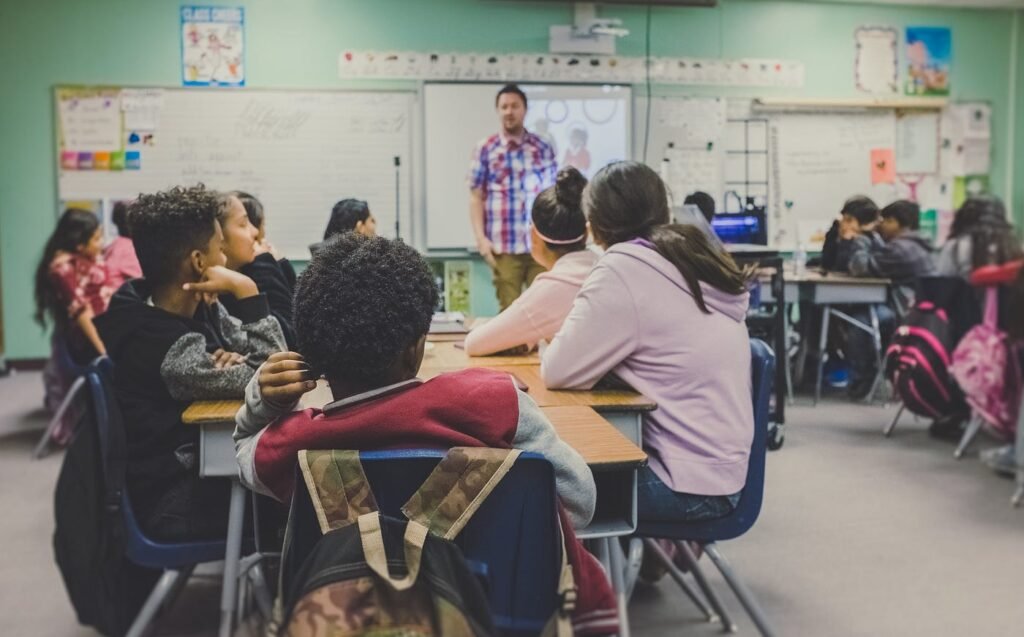In the evolving landscape of education, the gap between theory and practice has become a critical point of discussion. Traditional education systems have long focused on theoretical knowledge, providing students with an understanding of concepts, frameworks, and ideas. However, in today’s rapidly changing world, there is a growing recognition of the need to connect this theoretical knowledge with practical skills that can be applied in real-world scenarios. Practical education programs are designed to bridge this gap, offering students hands-on experiences that reinforce theoretical learning and better prepare them for the demands of the modern workforce.
This article explores the impact of practical education programs on student development, career readiness, and academic success. By examining various types of practical education initiatives—such as internships, apprenticeships, project-based learning, and lab work—we will assess how these programs benefit students and the role they play in shaping future professionals. Additionally, we will address some frequently asked questions to provide further insights into the importance of practical education.
Key Takeaways:
- Practical education programs bridge the gap between theory and real-world application, providing students with hands-on learning experiences.
- These programs enhance employability, develop transferable skills, and build professional networks.
- Practical education fosters confidence, independence, and problem-solving abilities, helping students prepare for the challenges of the workforce.
- Whether in internships, apprenticeships, or service learning, practical education programs are an integral part of preparing students for future success.
The Need for Practical Education
Historically, education systems focused primarily on theoretical learning, emphasizing the memorization of facts, figures, and concepts. While this knowledge forms the foundation of many disciplines, it often leaves students with limited ability to apply what they have learned in real-world contexts. This issue has become more apparent as industries and workplaces evolve, requiring individuals who are not only knowledgeable but also skilled in applying their knowledge to solve problems, innovate, and navigate complex scenarios.
Practical education programs address this gap by offering students opportunities to gain real-world experience and develop the skills they need to succeed in their careers. These programs provide valuable exposure to the professional environment, enabling students to learn through direct experience and active participation in tasks that mirror the challenges they will face in their chosen fields.
The importance of practical education has been further highlighted by the changing nature of work. With the rise of automation, digital transformation, and new industries, employers are seeking candidates with hands-on experience who can contribute to the workforce immediately. As such, the integration of practical education into academic curricula is not just a desirable addition; it is a necessity for producing well-rounded graduates who are equipped to thrive in today’s dynamic job market.
Types of Practical Education Programs
Practical education programs come in various forms, each designed to provide students with different types of hands-on learning experiences. Below are some of the most common types of practical education programs:
Internships
Internships are one of the most widely recognized forms of practical education. These programs allow students to work in a professional environment for a specified period, usually during their academic studies. Internships can be paid or unpaid and may be offered in a variety of fields, from business and engineering to healthcare and the arts.
Internships offer students the opportunity to gain practical experience, develop industry-specific skills, and build a professional network. By working alongside experienced professionals, interns gain insight into the day-to-day operations of their chosen field and learn how to apply their academic knowledge in real-world situations. Internships also provide an opportunity for students to explore different career paths, helping them make informed decisions about their future careers.
Apprenticeships
Apprenticeships are formal training programs that combine on-the-job training with classroom instruction. Typically offered in skilled trades such as carpentry, plumbing, and electrical work, apprenticeships allow students to learn the practical aspects of their chosen trade while earning a wage. Apprentices spend time working under the guidance of experienced professionals, gradually gaining the skills and knowledge needed to perform the job independently.
Apprenticeships are particularly beneficial for students who prefer hands-on learning and want to enter the workforce immediately after completing their training. These programs are highly valued in industries where practical skills are paramount, and they often lead to full-time employment opportunities upon completion.
Project-Based Learning
Project-based learning (PBL) is an educational approach that encourages students to work on real-world projects as a way of applying their theoretical knowledge. In PBL, students collaborate on projects that require them to solve complex problems, conduct research, and create tangible outputs. This approach allows students to develop critical thinking, problem-solving, and teamwork skills while engaging in meaningful learning experiences.
In fields such as engineering, architecture, and design, project-based learning is particularly valuable, as it enables students to simulate the kinds of tasks they will encounter in their careers. PBL also fosters creativity and innovation, as students are encouraged to think outside the box and come up with original solutions to challenges.
Laboratory Work and Clinical Training
In fields such as science, healthcare, and technology, laboratory work and clinical training provide students with hands-on experience that is integral to their learning. Laboratory courses allow students to experiment with materials, conduct research, and apply theoretical concepts in a controlled setting. Similarly, clinical training gives healthcare students the opportunity to work with patients under the supervision of professionals, allowing them to develop essential skills such as diagnosis, treatment, and patient care.
These practical experiences are crucial for students pursuing careers in medicine, engineering, chemistry, and other science-based disciplines, as they enable them to develop the technical skills and confidence needed to succeed in their chosen field.
Service Learning and Community Engagement
Service learning programs combine academic learning with community service, allowing students to gain practical experience while contributing to their communities. These programs often involve students working on social, environmental, or civic projects that address real-world issues. Service learning helps students apply their knowledge to solve problems in society while also fostering a sense of social responsibility and empathy.
In addition to providing practical experience, service learning encourages students to think critically about the issues they are addressing and engage with diverse populations. This type of learning is especially valuable for students pursuing careers in social work, education, public health, and community development.
Benefits of Practical Education Programs
Bridging the Gap Between Theory and Practice
The most obvious benefit of practical education programs is that they help students bridge the gap between theoretical knowledge and real-world application. By engaging in hands-on experiences, students gain a deeper understanding of the concepts they have learned in the classroom. This application of knowledge makes learning more meaningful and relevant, helping students retain information more effectively.
Enhancing Employability
Employers are increasingly looking for candidates who have practical experience in addition to academic qualifications. Practical education programs provide students with the skills, experience, and professional networks necessary to stand out in the competitive job market. By participating in internships, apprenticeships, and project-based learning, students can demonstrate their ability to apply their knowledge in real-world settings, making them more attractive to potential employers.
Developing Transferable Skills
Practical education programs help students develop a wide range of transferable skills that are valuable in any career. These skills include problem-solving, communication, teamwork, time management, and critical thinking. Practical experiences teach students how to navigate challenges, think critically, and collaborate with others—skills that are essential for success in the workplace.
Building Professional Networks
Internships, apprenticeships, and other practical education programs provide students with opportunities to build professional networks. By interacting with industry professionals, students can establish connections that may lead to future job opportunities or mentorship relationships. These networks can also provide valuable guidance and support as students transition from education to the workforce.
Fostering Confidence and Independence
Hands-on learning experiences help students gain confidence in their abilities. When students see the results of their hard work and successfully complete projects or tasks, they develop a sense of accomplishment and self-assurance. This confidence is crucial for navigating the challenges of the professional world and pursuing career goals with determination.
Fostering Cultural Awareness and Global Citizenship
In today’s increasingly interconnected world, the ability to understand, respect, and appreciate cultural differences is becoming essential for individuals and societies alike. Fostering cultural awareness and promoting global citizenship are integral aspects of modern education, personal growth, and international cooperation. By cultivating cultural awareness, individuals can develop the skills necessary to engage meaningfully with diverse communities, while global citizenship encourages a sense of responsibility toward the collective well-being of humanity.
This article delves into the importance of fostering cultural awareness and global citizenship, examining the benefits, strategies for achieving these goals, and the role of education in shaping responsible global citizens.
Understanding Cultural Awareness
Cultural awareness refers to the ability to recognize and understand the differences and similarities between cultures. It involves being sensitive to and respectful of cultural variations in terms of language, traditions, values, customs, and behaviors. Cultural awareness is not merely about recognizing cultural differences but also about understanding how these differences influence human interactions and perceptions.
For example, a person with high cultural awareness might understand that a handshake in one culture signifies respect, while in another, bowing may be the preferred form of greeting. Cultural awareness helps individuals avoid misunderstandings, foster positive relationships, and navigate intercultural challenges effectively.
Key Components of Cultural Awareness
- Knowledge of Cultural Differences: Understanding the customs, traditions, and values of different cultures helps individuals avoid stereotyping and miscommunication.
- Respect for Diversity: Embracing differences without judgment fosters a welcoming and inclusive environment for all individuals, regardless of their cultural backgrounds.
- Open-mindedness: Being open to learning about and understanding new cultures allows individuals to challenge biases and expand their worldview.
The Importance of Global Citizenship
Global citizenship is the concept that all individuals, regardless of nationality or background, have rights and responsibilities toward the global community. A global citizen sees themselves as part of a larger world, one that is interconnected and interdependent. The values of global citizenship emphasize social responsibility, cultural understanding, environmental sustainability, and active participation in global issues such as poverty, inequality, and human rights.
Global citizenship encourages individuals to take ownership of global challenges and work toward solutions that benefit the common good. It transcends borders, advocating for a sense of unity and shared humanity.
Key Principles of Global Citizenship
- Social Responsibility: Global citizens are aware of their role in society and take responsibility for contributing to the well-being of others, whether locally or globally.
- Environmental Stewardship: Global citizens advocate for sustainable practices and work toward protecting the planet for future generations.
- Commitment to Human Rights: Global citizenship involves standing up for the dignity and rights of all people, regardless of their background or location.
- Civic Engagement: Active participation in local and global initiatives, such as volunteering, political activism, or advocacy, is a core element of global citizenship.
The Interconnection Between Cultural Awareness and Global Citizenship
Cultural awareness and global citizenship are deeply interconnected. Cultural awareness provides the foundation for understanding the diverse ways in which people from different cultures view the world. By developing this awareness, individuals are better equipped to become global citizens who appreciate the value of diversity and work toward creating an inclusive and just world.
For instance, an individual who is culturally aware may be more likely to engage in actions that promote social justice, advocate for the protection of cultural heritage, or participate in international peace-building efforts. Conversely, someone with a strong sense of global citizenship will likely seek to learn about and understand other cultures to better collaborate in solving global challenges.
In many ways, cultural awareness acts as a stepping stone toward global citizenship. As people learn to appreciate cultural differences and nuances, they develop the empathy, respect, and open-mindedness that are essential for becoming engaged global citizens. The blending of cultural awareness and global citizenship creates individuals who are committed to making a positive difference in the world and building bridges between diverse communities.
Fostering Cultural Awareness and Global Citizenship in Education
Education plays a pivotal role in nurturing both cultural awareness and global citizenship. Schools, universities, and educational institutions have a unique opportunity to equip students with the knowledge, skills, and attitudes necessary to become responsible global citizens who are conscious of cultural differences and eager to promote social justice.
Integrating Global Issues into the Curriculum

One of the most effective ways to foster global citizenship and cultural awareness is to integrate global issues into the curriculum. Topics such as climate change, migration, poverty, gender equality, and human rights can be explored through the lens of different cultures and perspectives. By learning about global challenges and understanding the diverse ways in which they affect people around the world, students can develop a sense of empathy and responsibility toward others.
For example, a geography or history class can discuss the impact of colonization on indigenous cultures, or a literature class can explore works by authors from various parts of the world. When students are exposed to multiple viewpoints, they are better able to understand and appreciate the complexity of global issues.
Promoting Study Abroad Programs and Cultural Exchange

Study abroad programs and cultural exchanges offer students the opportunity to immerse themselves in different cultures and experience life in another country. By living and studying in a foreign environment, students gain firsthand knowledge of cultural norms, values, and practices. These programs help students develop the skills to adapt to new cultures, communicate across cultural boundaries, and understand the global interconnectedness of society.
In addition, cultural exchange programs allow students to engage with peers from different backgrounds and learn from each other’s experiences. This fosters an environment of mutual respect and cooperation, where students can share their own cultures and learn about others.
Encouraging Volunteerism and Service Learning
Service learning programs are an excellent way for students to engage with local and global communities in a meaningful way. By participating in volunteer work or community service projects, students gain practical experience in addressing social issues and promoting positive change. Service learning provides students with the opportunity to see how global issues play out on a local level and contribute to solutions that benefit people from all walks of life.
Volunteer programs, particularly those that involve international or cross-cultural work, also encourage students to step outside their comfort zones and engage with people from different backgrounds. This exposure to diverse cultures and experiences fosters cultural awareness and instills a sense of responsibility toward global citizenship.
Encouraging Critical Thinking and Empathy

Critical thinking and empathy are vital skills for fostering cultural awareness and global citizenship. Education should encourage students to question assumptions, challenge stereotypes, and critically analyze societal norms. By fostering these skills, educators can help students develop a deeper understanding of cultural differences and the factors that contribute to global issues such as inequality, conflict, and environmental degradation.
Empathy, in particular, is essential for promoting cultural understanding and global citizenship. When students learn to empathize with individuals from different cultures, they are more likely to act in ways that promote justice, fairness, and equality.
The Benefits of Fostering Cultural Awareness and Global Citizenship
Increased Tolerance and Respect
Fostering cultural awareness helps individuals develop a broader perspective on the world, reducing prejudice and promoting tolerance. When individuals understand and respect cultural differences, they are less likely to engage in discriminatory behavior and more likely to celebrate diversity.
Enhanced Communication and Collaboration
Cultural awareness and global citizenship encourage individuals to communicate effectively with people from diverse backgrounds. This skill is invaluable in today’s globalized workplace, where collaboration with colleagues from different countries and cultures is increasingly common.
Empowerment to Address Global Issues
Global citizens who are culturally aware are better equipped to address global challenges such as poverty, inequality, and climate change. They understand the interconnectedness of the world and are motivated to take action to create positive change on a global scale.
Personal Growth and Development
Cultural awareness and global citizenship contribute to personal growth by expanding one’s worldview and fostering greater empathy. By learning about different cultures and engaging with global issues, individuals gain a deeper sense of purpose and fulfillment.
Also Read : Global Classrooms: The Future Of International Education
Conclusion
Practical education programs are vital for preparing students for the challenges of the modern workforce. By providing hands-on learning opportunities, these programs help students bridge the gap between theory and practice, enhancing their employability and equipping them with the skills necessary to succeed in their careers. Whether through internships, apprenticeships, project-based learning, or service learning, practical education fosters personal growth, confidence, and professional development, making it an essential component of modern education.
FAQs
What is the difference between an internship and an apprenticeship?
Internships are short-term, typically unpaid or low-paid positions that provide students with work experience in a professional setting. Apprenticeships, on the other hand, are formal training programs that combine on-the-job experience with classroom instruction and often result in full-time employment.
How can practical education programs help me with my career?
Practical education programs allow you to gain hands-on experience in your field, develop transferable skills, and build professional networks, all of which increase your employability and career readiness.
Are practical education programs only for certain fields?
No, practical education programs are beneficial in virtually every field. Whether you are studying business, engineering, healthcare, or the arts, hands-on learning experiences can enhance your understanding of theoretical concepts and prepare you for professional work.
How do internships benefit students who are unsure about their career path?
Internships provide valuable exposure to different industries and job roles, helping students explore potential career options. They offer an opportunity to gain practical experience, learn about various career paths, and make informed decisions about their future.
What skills can students develop through project-based learning?
Through project-based learning, students develop critical thinking, problem-solving, teamwork, communication, and time management skills. They also learn how to apply theoretical knowledge to practical challenges.
Do I need to have previous experience to participate in an apprenticeship?
Apprenticeships are designed for individuals who want to learn a trade or skill, so prior experience is often not required. The program provides both training and hands-on experience, allowing participants to develop expertise from the ground up.
How can service learning contribute to my personal growth?
Service learning allows students to engage with their communities, helping them develop empathy, social responsibility, and a deeper understanding of societal issues. It also provides an opportunity to apply academic learning to real-world problems, fostering both personal and academic growth.




